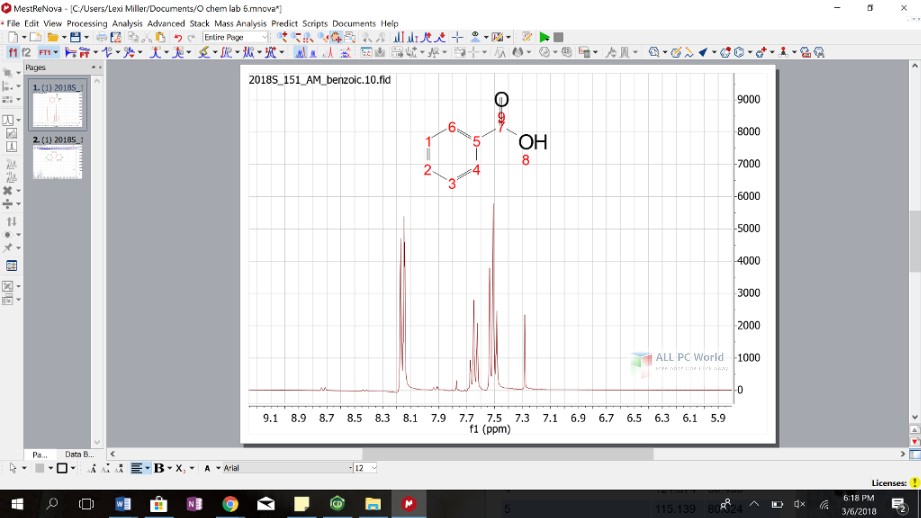


Drag over the signal you want to integrate and continue for all relevant signals.Click on the Integration icon and select Manual (Shortcut: I).The next step is to integrate the signals. If you want to delete a peak, press the icon and select Delete Manually (Shortcut: Shift+Cmd+K) and drag over the peaks you want to delete.If you have to zoom into an area, press Z, zoom onto the area, press Cmd+K, pick the peaks, press F and repeat for the remaining peaks. Else, press the icon and select Peak by Peak (Shortcut: Cmd+K).If you have a very clean spectrum, go to the Peak Picking icon and click on "Automatic" (not recommended).The first step is to pick all relevant peaks. Now, as the spectrum has been calibrated, we need to process our data. At "New Shift: " type in 0 ppm or go to "Solvents>" and select "TMS"(If you reference on a solvent signal, pick your respective solvent here).A red crossbar should appear, click the peak of your TMS-signal.

press L or select the Reference icon and click Reference.Press Z and zoom into the TMS-signal at about 0 ppm.If you have silicon in your compound, or if the TMS-signal is not visibile, you can also do the following with a solvent peak. Usually, you pick the TMS-signal which is supposed to be on the far right of your spectrum. The next step is to pick a reference signal for your spectrum. Select a method (I recommend the Whittaker Smoother) and press Ok.If you want to flatten your baseline, press the Baseline Correction icon and Play around with holding the right or the left mouse button, until your baseline is flat. or, if this is not sufficient, press Manual Correction (Shortcut: Shift+P), and drag on the blue area.If the baseline and signals look all waivy, you can click on the Automatic Phase Correction icon and either or go to the top menu and select: File > Open.Drag and drop your zip-file or folder into the Mestrenova screen


 0 kommentar(er)
0 kommentar(er)
